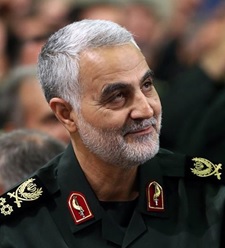On July 2, Iranian lawmaker Alaeddin Boroujerdi announced the allocation of more than $600 million to strengthen the country’s missile defense system and the Qods Force of the Islamic Revolutionary Guard Corps (IRGC). Boroujerdi, chairman of Parliament’s National Security and Foreign Policy Committee, framed the additional funding as part of a broader counter-terrorism effort. Parliament alleged a link between the United States and Sunni extremists: “Given that Americans and their regional allies have been backing groups like ISIL and Jabhat al Nusra as evidenced by presence of their injured members in hospitals of the Zionist regime, it can be concluded that enemy seeks to put a new wave of pressure against Iran.”
Legislation for the additional funding was announced on June 28 following the June 15 passage of U.S. Senate legislation which, if signed into law, would impose fresh sanctions on Iran over its ballistic missile program. Iranian lawmakers promised countermeasures, and Kazem Jalali, head Parliament’s research arm, said that the bill was intended to help the Qods Force “fight U.S. terrorist acts.” Iran recently exercised its ballistic missile capability in a retaliatory strike on ISIS targets in the Deir el Zour region after twin terror attacks in Tehran on June 7.

Iran is estimated to spend around $14 billion on its military budget, with half of that allocated to the IRGC. The expansion of funding comes as the controversial Qods Force and its influential Commander Qassem Soleimani have expanded their involvement in conflicts in Syria and Iraq. The Iranian Revolutionary Guard was established alongside the conventional Iranian military with a special mission to ensure regime survival and guard the Islamic nature of Iran’s political system. The Qods Force was founded in the early 1980s to conduct the foreign missions of the IRGC, and began arming and training Iraqi Kurds to aid in the fight against Iraq. Many Qods Force soldiers have been killed in the Syrian conflict that began in 2011. As of mid-2016, some 2,000 Qods Force troops were in Syria.
The proposed expansion in military spending came after lawmakers voted for an earlier increase in military spending on Jan. 8, 2017. That vote took place before parliamentary elections were held on February 26, 2016. The Principalists, Iran’s conservative grouping, dominated the previous Parliament, but centrists and Reformists made strong gains in the 2016 elections.
